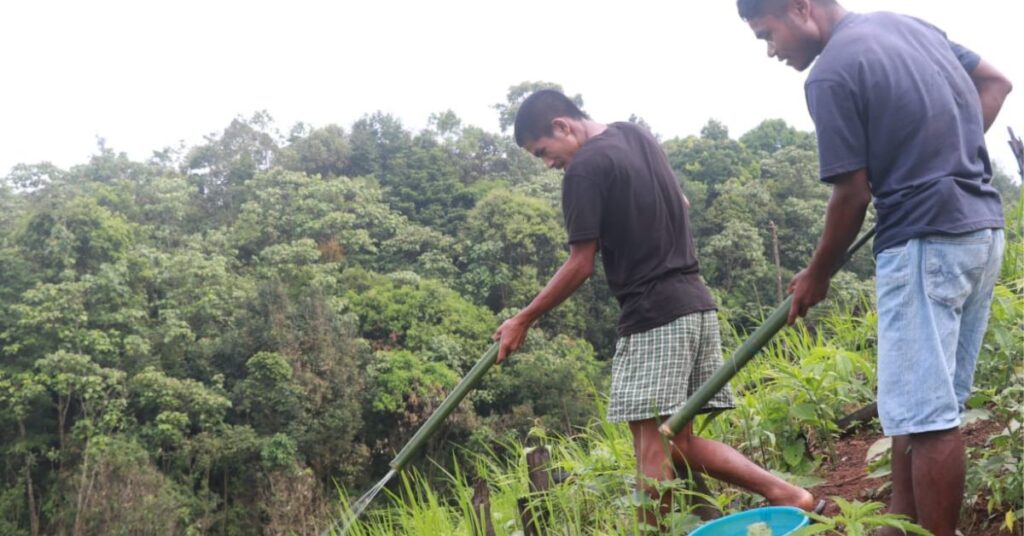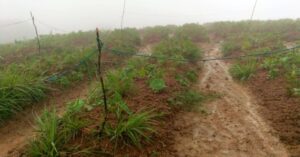Located in the East Garo Hills district of Meghalaya, Mandalgre is a serene, picturesque village with green hills and fresh waterfalls. With an elevation of above 1000 meters, it stands tall as the highest village in the Garo Hills region. The village is an active participant of NESFAS and is partaking in the ongoing project “Empowering Indigenous Communities through Agroecology Learning Circles (ALCs) for resilient, integrated and innovative natural resource management”, which is supported by MBMA and funded by the World Bank.
The village of Mandalgre is an important place on the map of Garo Hills, though ironically, very few people have set foot on its soil. It is famous as the home of the unsung hero Sanja Manda Sangma, a legendary Garo warrior who opposed British rule in the region. It is also ideal for a rural getaway, and a hotspot for adrenaline junkies as it is home to a lot of steep waterfalls, deep lakes, flora and fauna, and the land is loaded with history and interesting stories.
Mandalgre has been practising shifting cultivation since time immemorial and as knowledge holders of an indigenous community, they hold a plethora of information pertaining to agrobiodiversity and indigenous farming practices.

Polsing B Marak, aged 54 years, is a progressive farmer of Mandalgre who has an innovative approach to tackling pest problems. He has been using an indigenous pest sprayer made of bamboo poles. The instrument functions like a syringe and has two parts, the barrel and the piston with a suction pump. The barrel is approximately 2 feet long, open at one end, and has small holes at the other. The suction pump is made of a smaller stick of bamboo, in whose ends a piece of cloth or a rubber cut from the soles of old flip-flops is attached, to act as a suction pad. The suction pad is cut to fit the insides of the bamboo barrel. The instrument can spray as far as 10 meters. The abundance of bamboo in the region makes it convenient for the people of the community to rely on this method without having to purchase plastic spray bottles from the market and makes for a valuable contribution to attaining sustainability.

The idea of making this indigenous spray dates back to his childhood days when he used to play with it as a toy. The toy was developed into a useful product and is now being used to spray organic solutions and plant infusions into infected plant crops grown by the farmers in the community.
Indigenous farmers like Polsing B Marak are stewards of the land, maintaining the closest relationships with the environment. If they hold the power and lead in the front line in the march toward sustainability and food sovereignty, then perhaps we can consider that half the battle has already been won.



